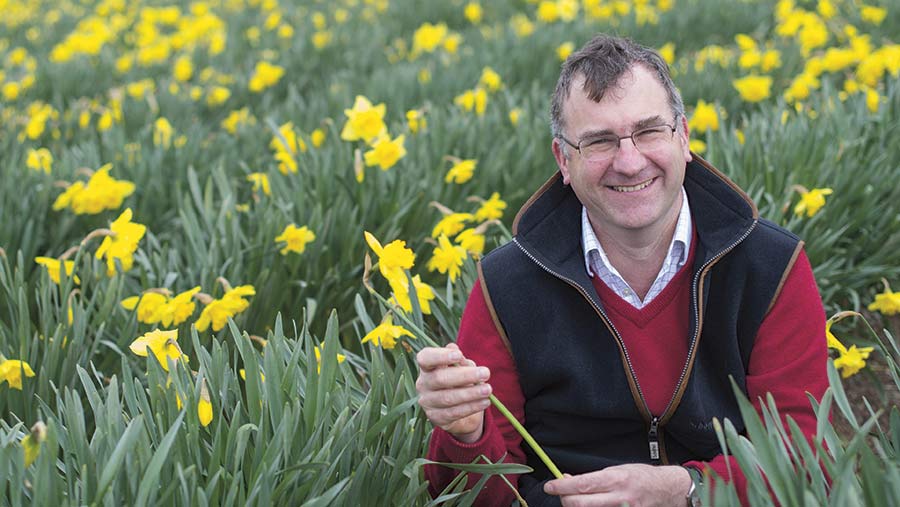Farmer Focus: Hard to get enough labour for daffodil picking
 © Jim Wileman
© Jim Wileman Most of our energies over the past month have been taken up with daffodil flower picking. This year we have had a relatively compact picking period, thanks (or not) to the mild conditions.
This has brought the challenge of finding sufficient labour, an area that is getting increasingly difficult.
I operate using a mix of directly employed labour and licensed gangs in order to give flexibility.
Each year I try to organise the right amount of labour, but differing weather conditions can swing the picking profile, often by up to three weeks, making implementation tricky.
See also: Read more from our Arable Farmer Focus writers
Tight specifications
Increasingly tight picking specifications can also make harvesting difficult when the weather is against us.
The “old boys” would say that flowers picked once the buds have split have the longest vase life, but those days are long gone, with the requirement now for very tight, green buds and no sign of anything yellow.
Under certain weather conditions the flowers can go from being too short to harvest to split and beyond a marketable stage in a little over 24 hours, making regular crop inspection essential.
Manage supply
I do need to give some credit to the flower marketing organisations we work with. They do a sterling job managing a short-season crop with a volatile growth profile.
With good chill facilities they are able to help manage supply and demand by evening out some of the peaks and troughs.
They face a further challenge this season, since two key sales opportunities where the consumer expects to see daffodils – Mothering Sunday and Easter – is relatively late.
I am anticipating good demand for our late-flowering varieties in the run-up to these two occasions.
Cornwall can produce good daffodil flowers for which there is a demand, so it is important that we see the opportunities despite the production challenges.
Wet delays work
Otherwise, the start of spring work has been delayed by wet weather. January and February, when I didn’t want to do any land work, were relatively dry.
This area has been behind on the rainfall average for about 12 months now and so a wet period was anticipated.
However, with fertiliser to spread, beans and barley to drill as well as potatoes to plant, there is a lot to get done in the next few weeks.
Jeremy Oatey manages 1,200ha of arable land near Plymouth in Cornwall and is 2013 Farmers Weekly Arable Farmer of the Year. Cropping includes wheat, barley, OSR, oats, beans, potatoes, onions, swedes and daffodils.

